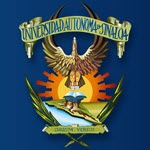Below is a summary of the abstract you submitted. Presenting author(s) is shown in bold.
If any changes need to be made, you can modify the abstract or change the authors.
You can also download a .docx version of this abstract.
If there are any problems, please email Dan at dar78@pitt.edu and he'll take care of them!
This abstract was last modified on March 31, 2025 at 7:59 p.m..

INTRODUCTION: Bacterial infections are a current challenge, due to multidrug resistance, caused by the excessive use of antibiotics. Among these bacteria, there exists a group called ESKAPE. This group of bacteria has a lot of mechanisms to evade antibiotic treatment, contributing to high mortality rates. This is why the OMS has put them on the priority list to search for new therapies. One of the most promising therapies are bacteriophages. These are viruses that can infect bacteria, being selective and not being a risk to human health. This Project aims to identify specific bacteriophages that present activity against the ESKAPE group, by isolation them through sewage water samples collected in Culiacan, Sinaloa, Mexico. METHODS: Sewage water samples were collected and processed. The samples were centrifuged and filtered through a syringe filter of 0.22µm. After the filtration, 50µL of the treatment were put in contact with 250 µL of each one of the ESKAPE group bacteria. After 5 minutes of interaction, 5 mL of top agar (0.7% agarose) were poured into the tube containing the mixture and poured into a PYCA plate to perform the double layer method agar and incubated for 24h at 37°C. After incubation, agar plates with clear zones were taken as a positive result. RESULTS: A total of 26 agar plates were positive for bacteriophages. The bacteria involved included K. pneumoniae, E. coli, A. baumannii, S. dysenteriae, E. faecium, S. typhi, S. agalactiae, E. cloacae, E. faecalis. The plaques have been purified, but there are still phages to isolate. CONCLUSIONS: The results show a great diversity of bacteriophages that can be isolated from sewage. However, further studies must be done to evaluate the genome of the bacteriophages and their viability to become candidates for bacteriophage therapy.

